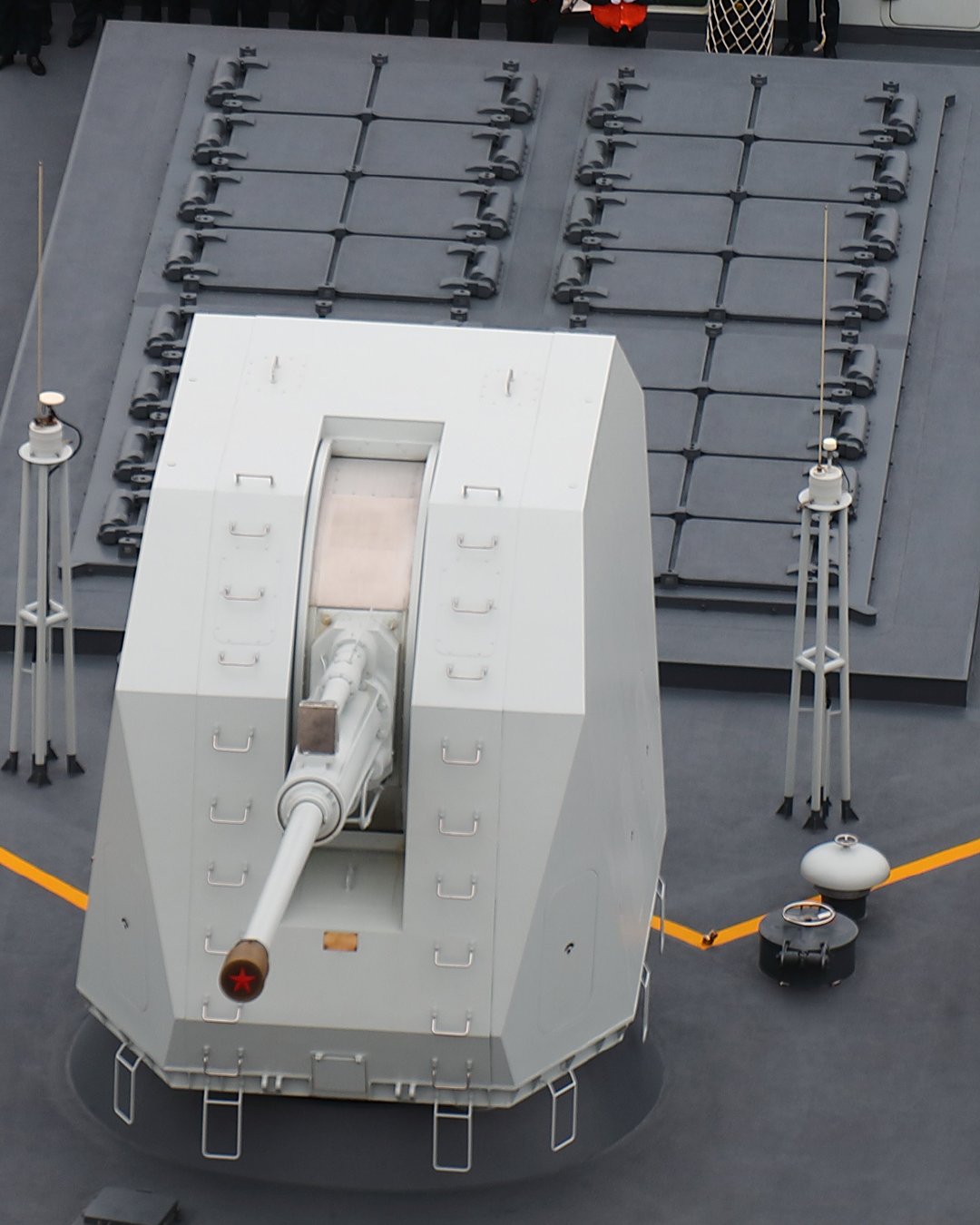I've just noticed on Wikipedia that the Type-52D entry is now listing COGAG propulsion instead of CODOG.
Has someone been playing silly buggers?
It looks pretty F Ued. It now calls the rear radar Type 518, instead of the Type 517M designation people have been using. Type 518 used to be the L-band search radar with a parabolic antenna on the old pre-refit Type 052, not going to look like anything close to the Type 517.
The Type 052C wiki entry has been revised to get all the radar designations correct.
Chinese wiki entry for Type 052D is much better.
An important change is that the Type 347G radar for the CIWS is now Type 349. Differences between Type 347G, Type 348 and Type 349 is as follows.
Type 347 --- Has a conical antenna with the tip chopped for a flat surface.
Type 348 --- Has much of the cone chopped away so it resembles the Type 344 gun fire control radar.
Type 349 --- The antenna is shaped like a cone. In other words, this is more like a miniature version of the Thales STIR.
Type 349 radar is a fire-control radar for
developed by
, also known as Xi’an Research Institute of Navigation Technology (西安导航技术研究所), with the Chinese naval designation of
H/LJP-349.
In addition to CIWS, Some models of Type 349 is also used to control larger caliber guns.
Type 349 radar is frequently but erroneously referred by many as either
or
, because externally, all three radars look very similar, and all three are developed as fire control radar for small caliber guns. In reality, the three radars are different and they can be easily distinguished by the following features: When electro-optics (EO) are integrated with radar, EO is installed on the portside of Type 347 radar antenna, but for Type 348 and Type 349, EO is installed on the starboard side of the radar antenna. Furthermore, when incorporated as part of
, Type 349 is slaved to Type 730 CIWS gun and thus does not rotate, because the gun rotates when searching/tracking. In contrast, Type 348 is not slaved to the Type 76 37mm twin guns, but instead, installed separately from the gun mounts, and thus Type 348 rotates when searching/tracking.
The shape of antenna is also an important visual cue to distinguish three radars. The tip of Type 349 radar is a conical, which is missing on Type 347. Instead, the tip of Type 347 radar antenna is a small circular flat surface, missing the tip of the cone. The antenna of Type 348 radar differs from both Type 347 and Type 349 radars in that most of the cone is missing, only the base remains, so the antenna of Type 348 radar has a very large circular flat surface, resulting in Type 348 radar resembles a scaled down version of another larger fire control radar for larger caliber guns (76 mm or greater),
.
Several models of Type 349 radars have been deployed by PLAN, with the first and most widely used version as the one installed on Type 730 CIWS. Another model used to control larger caliber guns is installed separately from the gun mount and rotates when searching/tracking. A derivative
can control both the small and larger caliber guns.








